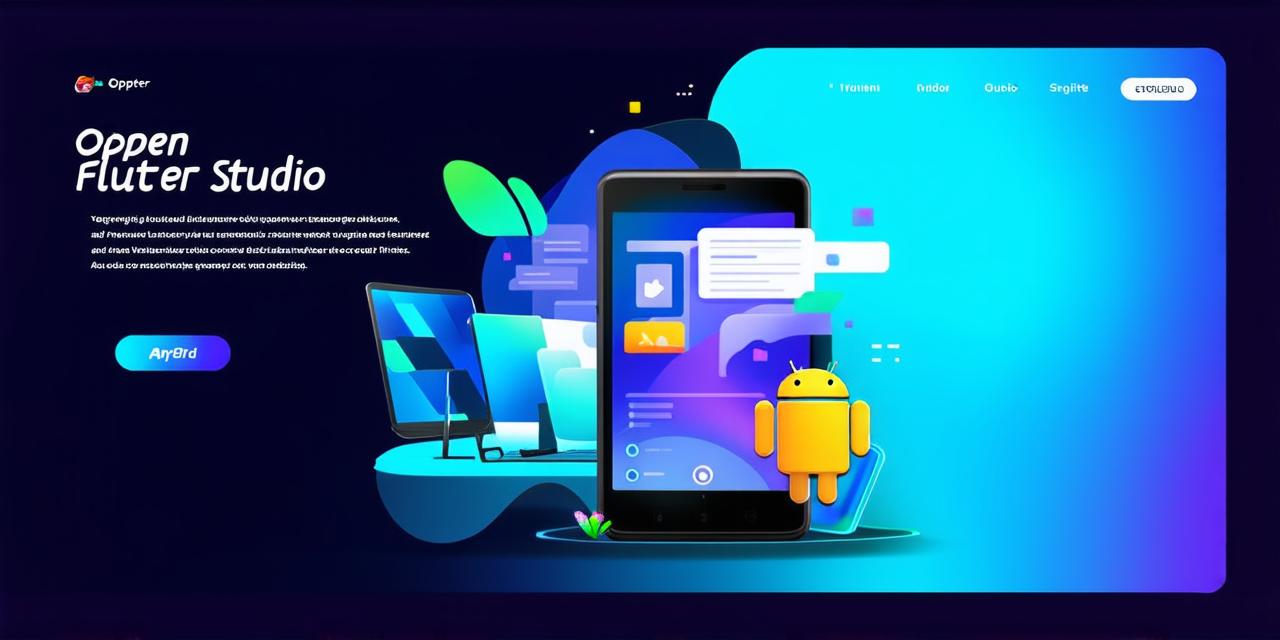
As an Android developer, you may be wondering how to expand your skill set and create cross-platform apps that can run on multiple devices. Flutter is a popular mobile app development framework that uses the Dart programming language. It’s known for its ability to create fast and efficient apps that look and feel great across various platforms.
In this tutorial, we will walk you through everything you need to know to get started with Flutter. We’ll cover the basics of Dart, how to set up a Flutter project, and some best practices for building seamless apps that work well on both Android and iOS devices.
Before we dive into Flutter, let’s take a quick look at Dart. Dart is a programming language that was developed by Google specifically for building mobile apps. It’s designed to be fast and efficient, with a focus on simplicity and ease of use.
Some of the key features of Dart include:
- Statically-typed code
- Optionals
- Null safety
- Flutter-specific features

Now that we’ve covered the basics of Dart, let’s move on to setting up a Flutter project. The first step is to download and install the Flutter SDK, which includes all the tools you need to create and run Flutter apps.
Getting Started with Flutter
- Go to the Flutter website and click on “Get Started” in the top right corner.
- Follow the instructions to download and install the Flutter SDK.
- Once the installation is complete, open a terminal window or command prompt and run the following command:
flutter doctor --android-sdk - Finally, create a new Flutter project by running the following command in the terminal window or command prompt:
flutter create my_app
Building Your First Flutter App
Now that we’ve set up our project, let’s build our first Flutter app. In this example, we’ll create a simple app that displays a message on the screen.
- Open the “lib” folder in your project directory and open the file called “main.dart”.
- Replace the existing code with the following:
- Save your changes to the file and run the app using the following command in the terminal window or command prompt:
flutter run
dart
import ‘package:flutter/material.dart’;
void main() {
runApp(MyApp());
}
class MyApp extends StatelessWidget {
@override
Widget build(BuildContext context) {
return MaterialApp(

title: ‘Flutter Demo’,
home: Scaffold(
appBar: AppBar(
title: Text(‘Hello, World!’),
),
body: Center(
child: Text(‘Hello, World!’),
),
),
);
}
}
Cross-Platform Development with Flutter
One of the key advantages of using Flutter for mobile app development is its ability to create apps that run seamlessly on both Android and iOS devices. This is achieved through the use of a single codebase that can be compiled for multiple platforms.
To take advantage of this feature, you’ll need to learn how to build custom widgets and use the Cupertino widget set for iOS app development. Flutter has a wide range of built-in widgets that you can use to create your app, but sometimes you may need to create custom widgets that work specifically on Android or iOS.
When building custom widgets, it’s important to keep in mind the platform-specific differences and how they affect the user experience. For example, buttons and touch targets may be larger on Android devices than on iOS devices, so you’ll need to adjust your widgets accordingly.
Best Practices for Building Seamless Apps with Flutter
- Use platform-specific features when appropriate
- Optimize your app for performance
- Test your app thoroughly
- Follow Flutter best practices
Conclusion
Flutter is a powerful tool for building cross-platform mobile apps with a single codebase. With its wide range of built-in widgets, efficient performance, and platform-specific features, Flutter is an excellent choice for developers who want to create apps that work seamlessly on both Android and iOS devices. By following best practices and using the right tools and techniques, you can create high-quality apps that provide a great user experience and help you stand out in a crowded market.
